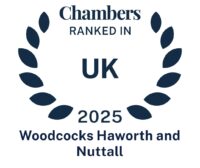Investment in the commercial property sector in the North West reached £709million during the third quarter of 2015 and in Lancashire low interest rates and a rise in rents has resulted in a strong commercial property market.
In 2016, rather than being overly focused on simply managing costs, commercial landlords and asset managers are taking a proactive approach to maximise profitability.
Our legal experts at Woodcocks, Haworth and Nuttall have seen a rise in demand for their services in the sector, helping businesses across Lancashire move premises, invest in new machinery, take on new staff and launch new services to make a larger return on investment.
Many landlords and asset managers no longer invest with long-term income in mind but instead are exploring different angles to increase the asset value over a three to five year period.
We are helping more landlords and asset managers increase not only the capital value of the asset but also the income generated. This allows for greater increase in capital value and an aggressive reduction in debt.
The number of landlords seeking to derive a tactical advantage from breaches of a lease has increased. This opens negotiations regarding the removal of a tenant break option, extended length of contractual term or increase in rent providing a better rental value of the asset.
Breaches of a user provision or an unlawful occupier of the premises may enable a landlord to threaten damages, forfeiture or injunctive relief. Likewise, dilapidations during the term of a lease create an opening for landlords to suggest a review of the lease terms.
In the past, it might have taken the roof falling off for a landlord to consider term dilapidations but landlords are now pulling tenants up on even non-material breaches.
Terminal dilapidations are a good opportunity to bring in some significant income. Landlords need to have the right team of surveyors and solicitors in place to negotiate and recover the highest sum possible in lieu of repairs being carried out. This means having a firm grip on what is actually meant by diminution in value and understanding how to disprove arguments of supersession.
If a tenant is looking to exercise a break option, asset managers should examine whether the notice has been served correctly and whether any break conditions have been satisfied. Break clauses have historically been interpreted very strictly in favour of landlords and we would estimate that nine out of ten purported notices that we come across are defective. With legal assistance you may be able to tie your tenant in until the end of the contractual term or negotiate a favourable surrender premium.
Effective credit control and debt recovery systems are essential for keeping on top of what is invariably the main source of income generated by commercial property. Waste no time in exploring the remedies available if a tenant starts to fall into arrears.
Minimising voids is a more obvious way of increasing the rental income but this involves careful planning in terms of marketing and timing. If a tenant has vacated its premises or is falling behind with the rent, there needs to be some joined up thinking between asset managers, solicitors and agents in order that empty rates relief can be fully utilised and there is a smooth transition between tenants.
Spending money on improving the infrastructure and aesthetic appearance of the property may not be high up on a landlord’s agenda but there are often methods of carrying out works and recovering the cost from tenants either via service charge provisions or via a party structures clause. The capital value of the asset can be increased at little or no cost to the landlord while improving the attractiveness of the property to tenants, customers and investors.
The above are just some of the ways landlords can achieve return on investment. To find out more about the steps you can start to take to increase the value of your asset, call the experts on 0161 761 4611 or email Daniel Long at daniel.long@whnsolicitors.co.uk.












